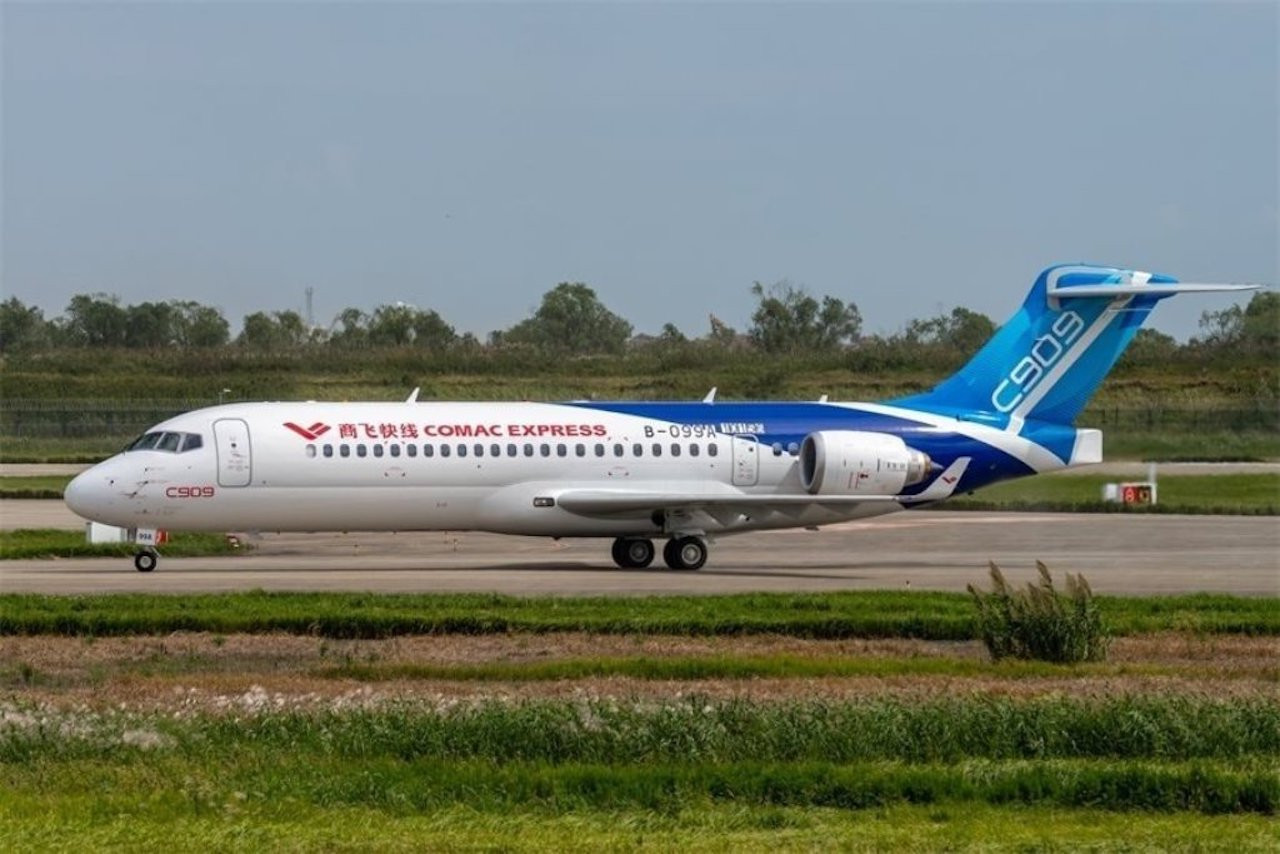
The Ministry of Construction has submitted a request to the Ministry of Justice for feedback on a fast-track procedure to amend decrees and circulars, enabling the licensing of Chinese-made COMAC aircraft for operations in Vietnam.
Current regulations do not permit COMAC aircraft operations
Under Article 6, Clause 4, Chapter 2 of Decree No. 92/2016, which governs air transport business operations in Vietnam, all imported aircraft must be certified by the U.S. Federal Aviation Administration (FAA), the European Union Aviation Safety Agency (EASA), or the Vietnam Civil Aviation Authority (CAAV).
Currently, COMAC C909 aircraft, produced by the Commercial Aircraft Corporation of China (COMAC), do not hold FAA or EASA type certifications. This has prevented the introduction of two COMAC C909 aircraft into Vietnam's aviation market.
To address this issue, Deputy Prime Minister Tran Hong Ha has directed the Ministry of Transport (now under the Ministry of Construction) to review existing legal frameworks and propose amendments to facilitate the certification of COMAC aircraft for operation in Vietnam.
Efforts to facilitate COMAC aircraft certification
The Ministry of Construction has formally sought input from the Ministry of Justice on implementing an expedited legislative process for revising relevant decrees and circulars.
Additionally, the Vietnam Civil Aviation Authority (CAAV) has been instructed to send personnel to work directly with COMAC to assess the C909 aircraft type (also known as ARJ21) and gather necessary data for certification once the legal amendments are enacted.
Between January 15 and 24, a CAAV delegation conducted on-site evaluations at COMAC and the Civil Aviation Administration of China (CAAC) in Shanghai.
The CAAV’s assessment found that Chinese airworthiness standards largely align with international safety norms, with only minor differences, such as the use of Chinese-language labels on aircraft components.
Given this, the CAAV has proposed recognizing China’s aircraft design and manufacturing standards, which would help alleviate the current aircraft shortage, facilitate fleet expansion, and create new growth opportunities for Vietnam’s aviation sector.
Recognizing airworthiness certification for COMAC aircraft
To enable COMAC aircraft operations in Vietnam, the CAAV has recommended that the Ministry of Construction amend:
Decree No. 92/2016, which governs conditional business sectors in civil aviation.
Circular No. 1/2011, which establishes safety regulations for aircraft operations, to recognize China’s airworthiness certification standards as a basis for aircraft importation.
The CAAV has registered this amendment in the 2025 legislative plan and will continue working with relevant agencies for its implementation.
Once the legal framework is in place, the CAAV will grant Type Certificates (TC) for COMAC aircraft.
For wet-leased aircraft operated by Vietnamese airlines, the CAAV will recognize individual COMAC aircraft’s airworthiness certification and conduct an evaluation of foreign operator certificates in accordance with Vietnam’s aviation safety regulations.
For dry-leased aircraft, the CAAV will add the COMAC aircraft type to the Air Operator Certificate (AOC) of Vietnamese carriers and issue airworthiness certificates for each specific aircraft.
The CAAV will also coordinate with CAAC to establish safety oversight responsibilities, including transferring oversight duties when necessary for wet-leased aircraft.
The Commercial Aircraft Corporation of China (COMAC) is a state-owned enterprise of the People's Republic of China, founded on May 11, 2008, and headquartered in Shanghai. COMAC has over 21,000 employees across six major research, development, and testing centers, as well as more than 10 operational units in China and abroad.
N. Huyen